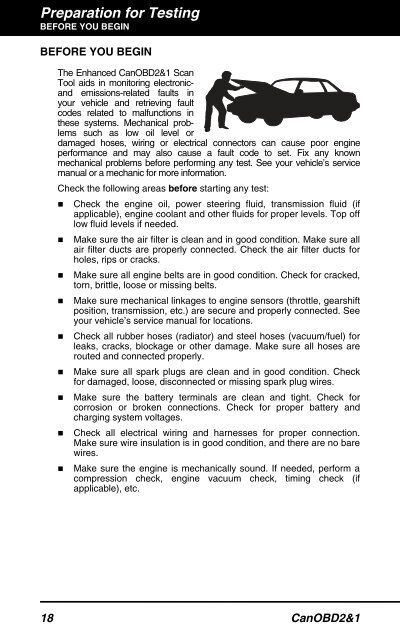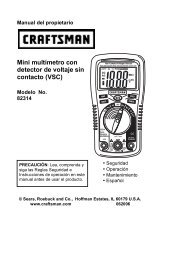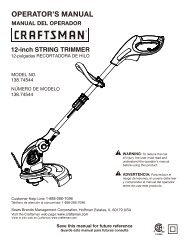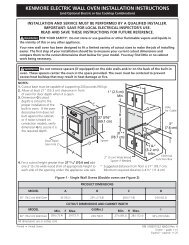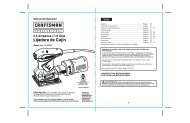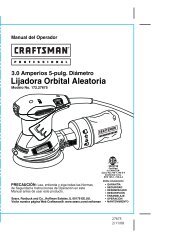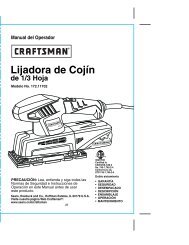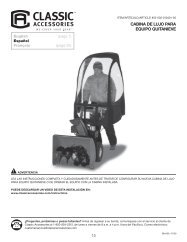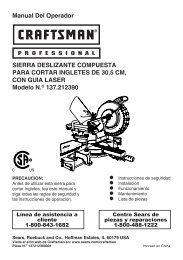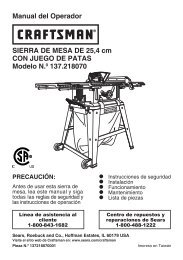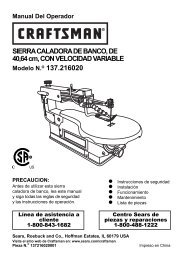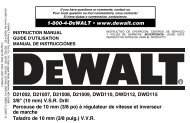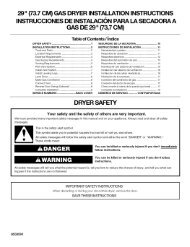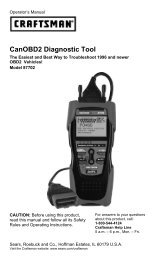You also want an ePaper? Increase the reach of your titles
YUMPU automatically turns print PDFs into web optimized ePapers that Google loves.
Preparation for Testing<br />
BEFORE YOU BEGIN<br />
BEFORE YOU BEGIN<br />
The Enhanced CanOBD2&1 <strong>Scan</strong><br />
<strong>Tool</strong> aids in monitoring electronicand<br />
emissions-related faults in<br />
your vehicle and retrieving fault<br />
codes related to malfunctions in<br />
these systems. Mechanical problems<br />
such as low oil level or<br />
damaged hoses, wiring or electrical connectors can cause poor engine<br />
performance and may also cause a fault code to set. Fix any known<br />
mechanical problems before performing any test. See your vehicle’s service<br />
manual or a mechanic for more information.<br />
Check the following areas before starting any test:<br />
� Check the engine oil, power steering fluid, transmission fluid (if<br />
applicable), engine coolant and other fluids for proper levels. Top off<br />
low fluid levels if needed.<br />
� Make sure the air filter is clean and in good condition. Make sure all<br />
air filter ducts are properly connected. Check the air filter ducts for<br />
holes, rips or cracks.<br />
� Make sure all engine belts are in good condition. Check for cracked,<br />
torn, brittle, loose or missing belts.<br />
� Make sure mechanical linkages to engine sensors (throttle, gearshift<br />
position, transmission, etc.) are secure and properly connected. See<br />
your vehicle’s service manual for locations.<br />
� Check all rubber hoses (radiator) and steel hoses (vacuum/fuel) for<br />
leaks, cracks, blockage or other damage. Make sure all hoses are<br />
routed and connected properly.<br />
� Make sure all spark plugs are clean and in good condition. Check<br />
for damaged, loose, disconnected or missing spark plug wires.<br />
� Make sure the battery terminals are clean and tight. Check for<br />
corrosion or broken connections. Check for proper battery and<br />
charging system voltages.<br />
� Check all electrical wiring and harnesses for proper connection.<br />
Make sure wire insulation is in good condition, and there are no bare<br />
wires.<br />
� Make sure the engine is mechanically sound. If needed, perform a<br />
compression check, engine vacuum check, timing check (if<br />
applicable), etc.<br />
18 CanOBD2&1


